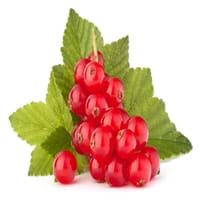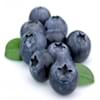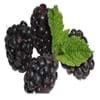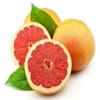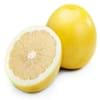Health Benefits
Cancer prevention, Gout treatment, Heart care, Regulation of heart rate, Treatment of rheumatism
Cancer prevention, Heart care, Increase in haemoglobin, Regulates Blood Sugar, Ulcer prevention
General Benefits
Anti oxidant properties, Controls blood pressure, Cures fever, Digestive aid, Healing of wounds, Helps in weight loss, Strengthens bones
Boosts immune system, Digestive aid, Fights against infections, Strengthens bones
Skin Benefits
Brightens and lightens complexion, Reduces wrinkles, Treatment of acne
Brightens and lightens complexion, Skin cleansing, Skin rejuvenation, Treatment of acne, Treatment of dark spots
Hair Benefits
Protects hair
Promotes longer and healthier hair, Protects hair
Allergy Symptoms
Abnormally rapid heart rate, Anaphylaxis, Breathing difficulty, Hives, Itching, Swallowing difficulties
Abdominal pains, NA
Side Effects
Possibly unsafe during pregnancy
Decrease in blood sugar levels, Allergic reaction, Throat irritation, Throat swelling, Possibly unsafe during pregnancy
Best Time to Eat
Best if taken as a breakfast (or empty stomach), As a snack in the late afternoon, Don't eat after meal, Morning time (before lunch)
As a snack in the late afternoon, Don't consume at night and before bed, Eat the fresh ones, avoid mixing with any other foods, don't eat after meal., Morning time (before lunch), Strictly avoid empty stomach
Vitamin B5 (Pantothenic Acid)
Not Available
Vitamin B9 (Folic acid)
Not Available
Vitamin C (Ascorbic Acid)
Vitamin E (Tocopherole)
Not Available
Vitamin K (Phyllochinone)
Not Available
Lutein+Zeaxanthin
Not Available
Phytosterol
Not Available
Calories in Fresh Fruit with Peel
Calories in Fresh Fruit without Peel
Not Available
Not Available
Calories in Frozen Form
Not Available
Not Available
Calories in Dried Form
Not Available
Calories in Canned Form
Not Available
Not Available
Type
Berry
Tree fruit, Tropical
Season
Summer
Monsoon, Summer
Varieties
Rovada, Stanza, Red Lake, Junifer and Jonkheer van Tets
Ram Jarnun and Paras
Color
Red
Black, Magenta, Purple
Taste
Sour, Tart
Astringent, Sweet
Origin
Europe
Bangladesh, India, Indonesia, Malaysia, Nepal, Pakistan, Philippines, Sri Lanka
Soil Type
Moist, Well-drained
Loam, Sandy loam, Well-drained
Climatic Conditions
Cold
Humid, Rainfall
Facts about
- The albino version of red currants known as white currants, are often sold as different fruit.
- Red currant tea is healthy substitute for coffee.
- There are more than 150 varieties of red currants.
- Wood of jambul tree is water-resistant wood & is used in railroads and to implement engines in the well.
- In Indian mythology, it is said that Jambul fruit was revered by Buddha.
- Jambul has a huge importance in Ayurveda.
Top Producer
Russia
India
Other Countries
Belgium, France, Germany, Ireland, Italy, Netherlands, Poland, Portugal, Scotland, Spain, Sweden, United Kingdom
Bangladesh, Indonesia, Malaysia, Nepal, Pakistan, Philippines, Sri Lanka
Top Importer
Germany
Not Available
Top Exporter
Russia
India
Botanical Name
Ribes rubrum
Syzygium cumini
Synonym
Not Available
Eugenia cumini
Subkingdom
Tracheobionta
Tracheobionta
Division
Magnoliophyta
Magnoliophyta
Class
Magnoliopsida
Magnoliopsida
Order
Saxifragales
Myrtales
Family
Grossulariaceae
Myrtaceae
Species
R. rubrum
S. cumini
Generic Group
Saxifrage
Not Available
Difference Between Red Currant and Jambul
We might think that Red Currant and Jambul are similar with respect to nutritional value and health benefits. But the nutrient content of both fruits is different. Red Currant and Jambul Facts such as their taste, shape, color, and size are also distinct. The difference between Red Currant and Jambul is explained here.
The amount of calories in 100 gm of fresh Red Currant and Jambul with peel is 56.00 kcal and 60.00 kcal and the amount of calories without peel is Not Available and Not Available respectively. Thus, Red Currant and Jambul belong to Low Calorie Fruits and Low Calorie Fruits category.These fruits might or might not differ with respect to their scientific classification. The order of Red Currant and Jambul is Saxifragales and Myrtales respectively. Red Currant belongs to Grossulariaceae family and Jambul belongs to Myrtaceae family. Red Currant belongs to Ribes genus of R. rubrum species and Jambul belongs to Syzygium genus of S. cumini species. Beings plants, both fruits belong to Plantae Kingdom.
